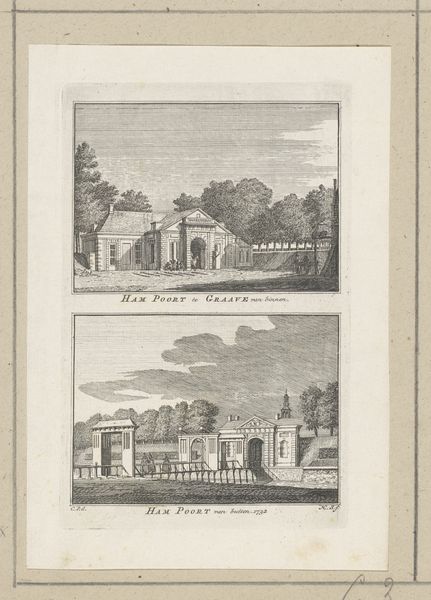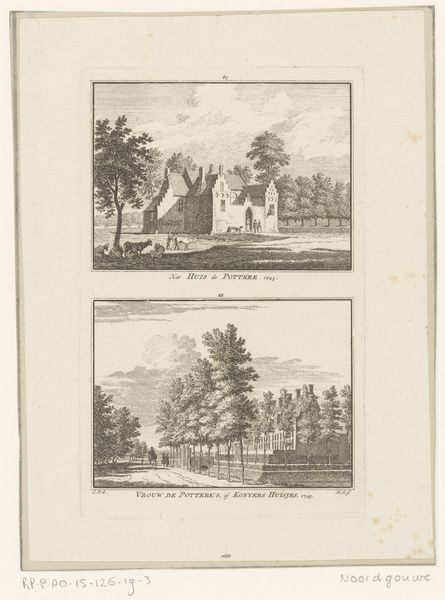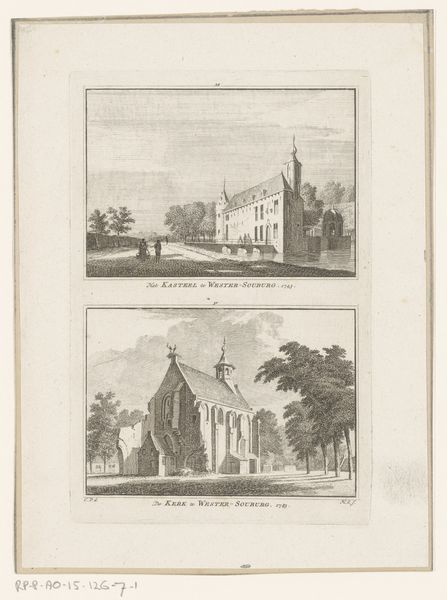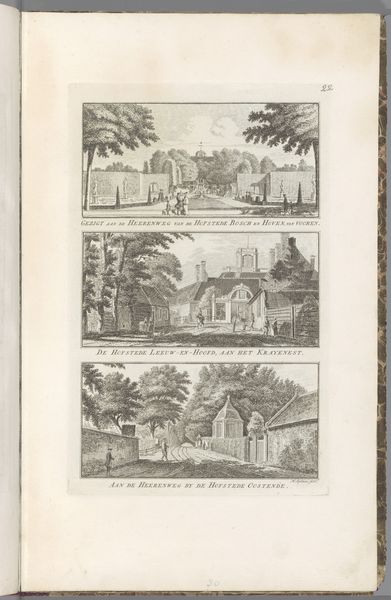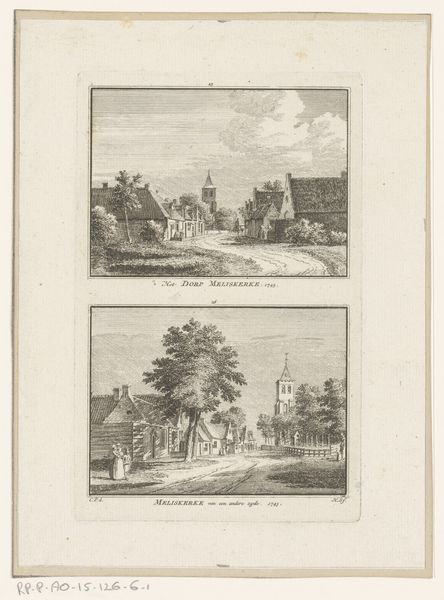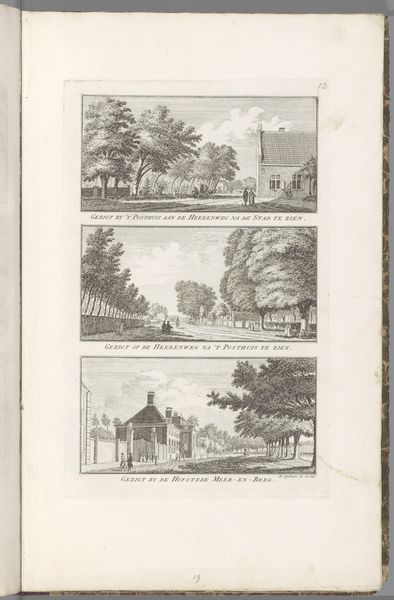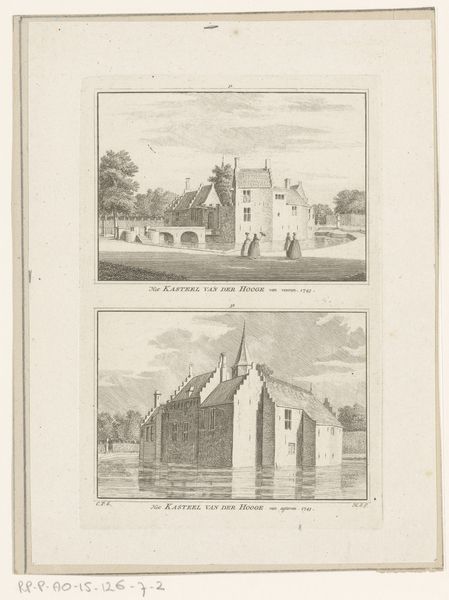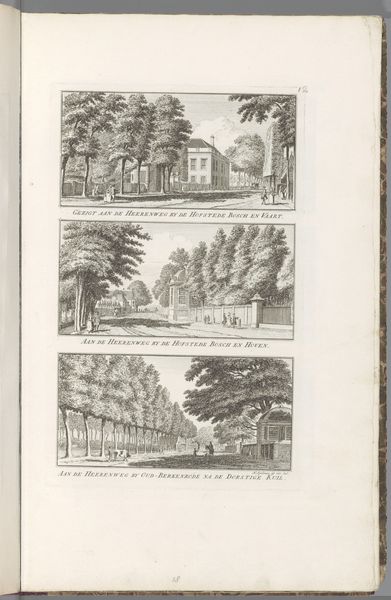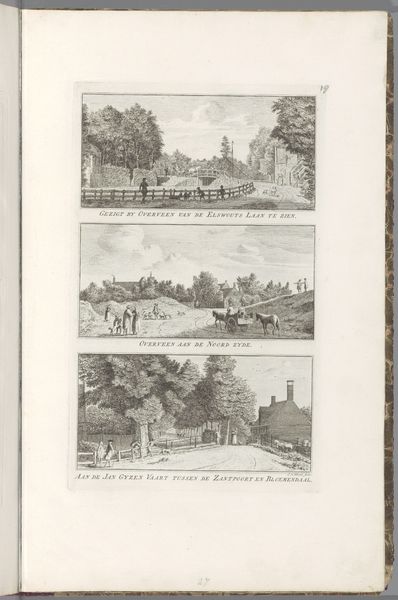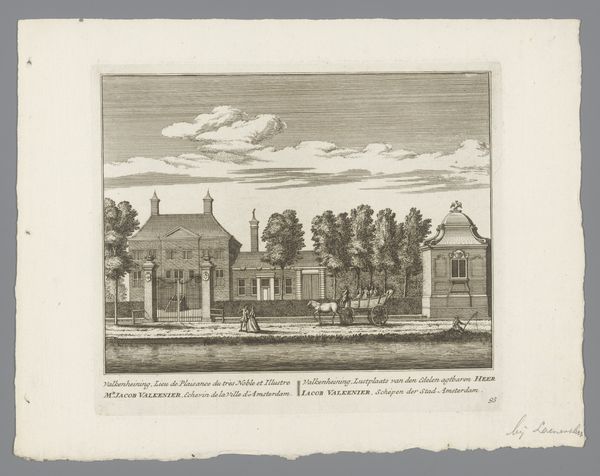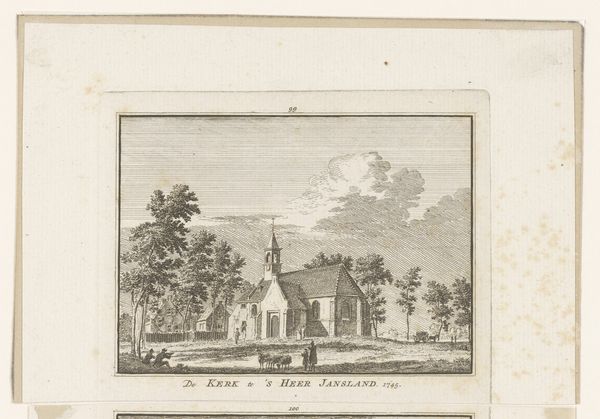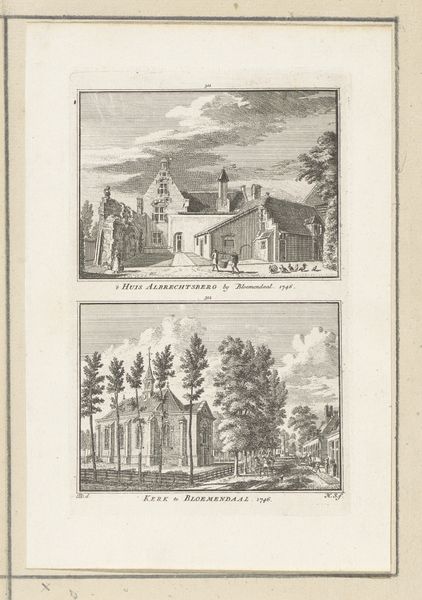
Gezicht op de Brugpoort van binnen Grave en gezicht op de Brugpoort van buiten Grave, 1732 1746 - 1792
0:00
0:00
hendrikspilman
Rijksmuseum
print, engraving, architecture
#
dutch-golden-age
# print
#
landscape
#
cityscape
#
engraving
#
architecture
Dimensions: height 168 mm, width 115 mm
Copyright: Rijks Museum: Open Domain
Editor: This print, "Gezicht op de Brugpoort van binnen Grave en gezicht op de Brugpoort van buiten Grave, 1732", made sometime between 1746 and 1792, is a delicate engraving by Hendrik Spilman, depicting a cityscape from two perspectives. What strikes me is how the architectural rendering almost feels like a stage set, particularly in the lower image. What are your thoughts? Curator: Indeed. The dual perspective, interior versus exterior, immediately sets up a dialogue about power, control, and the gaze. In the 18th century, who was granted access, and what did that access signify in terms of social standing and privilege? Editor: So you're saying that it’s more than just an architectural rendering? Curator: Exactly. Consider the visual weight given to the structures themselves versus the people populating the scene. Spilman isn't simply documenting architecture; he’s hinting at social hierarchies. Notice who is positioned inside versus outside, the interactions, even the body language depicted through subtle lines. What does that say about inclusion and exclusion within Dutch society at that time? Editor: It feels like access to inside is restricted to specific people based on clothing or stature maybe? Curator: Precisely. This piece prompts questions about access, visibility, and representation. We must think critically about how landscapes, even seemingly objective architectural studies, reflect and reinforce existing power dynamics. How do you think we can engage that with a contemporary audience? Editor: That's a compelling point. So it's about considering how those structures functioned in society beyond just their physical presence. Thanks, I definitely have more to consider now. Curator: Likewise. Seeing familiar forms anew—recognizing these "historical landscapes" through an intersectional lens—is how we breathe fresh relevance into the past.
Comments
No comments
Be the first to comment and join the conversation on the ultimate creative platform.
